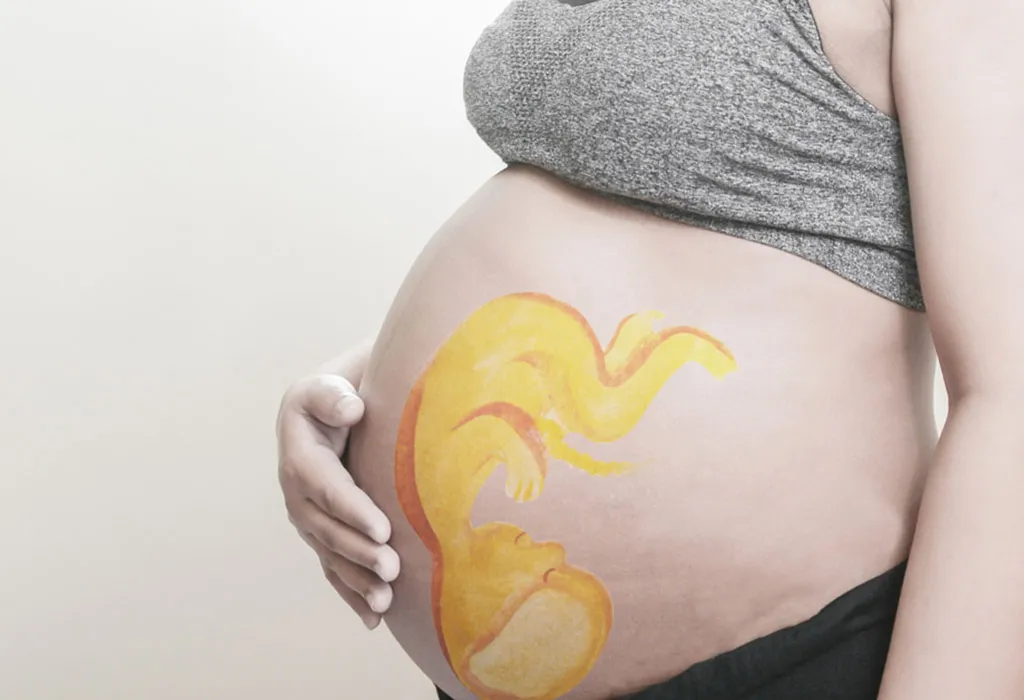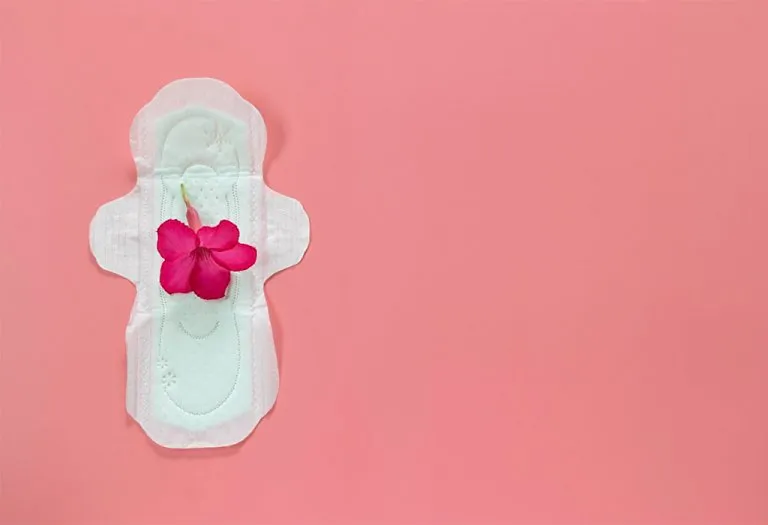Belly Mapping – How to Tell Your Baby’s Position?

The final position of the unborn baby before childbirth can significantly affect the labor and delivery experience for the mother-to-be. The best position for the baby to be in before delivery is with her head down, facing your back. This position is known as the vertex or cephalic position and allows for the smoothest passage through the birth canal. Women can find out in which position their baby is by using a technique called belly mapping. Belly mapping involves palpating the abdomen to identify the baby’s position, often with the help of a midwife or healthcare provider. This technique can help mothers understand their baby’s movements and positioning, providing reassurance and preparation for the birthing process.
What Is Belly Mapping?
Belly mapping is the process of determining your baby’s birthing position at the beginning of the third trimester. This is done by touching the abdomen and predicting the baby’s position based on the movements felt by the mother-to-be. This belly mapping procedure was pioneered by a woman named Gail Tully in the 1970s.
What Does the Baby’s Position Mean?
The unborn baby keeps changing position inside the womb as she grows. Before childbirth, the baby gets into a position that is ideal for natural childbirth. This is called the occipito-anterior position. In this position, the baby’s head is downwards near the cervix, and she faces your back. Her back is against your belly. This makes it easy to push the baby through the birth canal during labour. The baby may be in different positions inside the womb. Some of these are:
1. Head Downwards
Around 48 to 49 babies out of 50 will be in the head down position at 37 weeks of pregnancy just before childbirth. The baby may even turn to the head down position after labour starts. The head down position is when the baby’s head is facing the birth canal.
2. Breeched
The breech position is not an ideal position for childbirth as the baby’s head faces upwards and the baby’s bottom or feet face downwards. There different types of breech positions include cross-legged, bottom downwards, and feet first. If during belly mapping, the breech position is found, the mom-to-be can try stimulating the baby to turn around with certain exercises.
3. Anterior
The anterior position is when the baby is facing the mother’s back, and the baby’s back is against the mom’s belly. If during baby mapping, the anterior head downward position is found, it means the baby is in the correct position for normal delivery.
4. Posterior
The posterior position is when the baby is facing the mother’s belly, and the baby’s back is facing the mother’s back. This position is quite common, but not ideal for normal delivery. If during pregnancy belly mapping, the posterior position is found, the mothers can try exercises to prompt the baby to turn around.
When to Do Belly Mapping?
Belly mapping should be done in the third trimester after 30 weeks of pregnancy. It should be done after a doctor’s appointment. This way, you can learn from the doctor about where the baby’s head is and how she is positioned.
Steps to Do Belly Mapping
Wondering how to belly map? Here are measures you can take to determine your baby’s position:
- Gather the Materials: You will need a flat couch or bed to lie on, a large sheet of paper and a pen or pencil. You can also draw the baby’s position on the skin of your pregnant belly, for which you need non-toxic paints or markers.
- Find the Baby’s Head: Lie flat on your back or in a partly reclined position. Take deep breaths and relax. Place pressure very gently on the upper pelvic area above the pubic bone with your fingertips. If you feel something hard and round, it is the baby’s head. If you feel something round and soft, it could be the baby’s bottom. If you have felt hiccups in your lower abdomen, it means the baby’s head is downwards. You can try to pinpoint the location of the head using the direction of the baby’s movements. Strong kicks and rolls are from the legs and knees, but light fluttering movements are hands or fingers. Once you locate the head, mark it on your belly with the marker or on paper.
- Locate the Baby’s Back: Next, try to find the baby’s back. If you move your hands upwards from the baby’s head. If you can feel a smooth, hard mass, this is the baby’s back. If you cannot locate the back, it could be because the baby is in a posterior position where the baby’s back is facing your back.
- Mark the Position on Paper or Your Skin: Next, draw a large circle on the paper or on your belly. Divide it into four quadrants to help you figure out the baby’s position more easily. Mark the head and back.
- Use a Prop Doll: Use a baby doll to mirror the position of the baby’s head and back to figure out where the hands and feet are. Use the force and direction of the baby’s movements to locate the position of the hands and feet. Once done, mark this also on your belly or on the paper to give you the baby’s position.
Tips to Get Your Baby Out of an Inappropriate Position
Make sure to check with your doctor before doing any of these exercises. Here are some simple exercises that you can try doing to stimulate the baby to turn into the ideal birthing position:
- Pelvic Rocks: This should be done when you feel the baby move. Get down on all fours (your hands and knees) and rock back and forth for five minutes. You can repeat this thrice a day. This may prompt the baby to roll over to the head down, anterior position.
- Butterfly: Sit on the floor. Your bottom should touch the floor. Now, position your feet to align the soles as they touch each other. Lift your knees and thighs up and down a few times like the fluttering wings of a butterfly. This is good for your lower back and pelvis. It could prompt the baby to change position.
- Walking and Squats: Walking is good for you and the baby. It helps to pull the baby downwards by creating a rocking movement and by using gravitational force. Squats help strengthen the pelvic floor muscles which are crucial for pushing during labour. Squats also open up the pelvis to give the baby more space to descend into the head downward position.
- Exercise Ball: Sitting on an exercise ball will help strengthen your pelvis and core muscles. Sit on the ball with the hips higher than the knees.
- Forward Leaning: Forward-leaning inversion can help stimulate the baby to turn over to the occipito -anterior position, which is ideal for childbirth. Kneel on a couch and lower your arms to the floor such that your hands are touching the floor and your head hangs downwards. Raise your bottom high and flatten your back. Remain like this and then rise up.
What Will Happen if Your Baby is in The Wrong Position?
Using belly mapping in pregnancy, you can find your baby’s birthing position and take steps to correct it if the baby is not in an optimal birthing position. There are complications associated with giving birth to babies that are in the posterior or breech position. Mothers who deliver posterior babies may have a longer labour and may experience tearing of the perineum during delivery. The perineum is a skinny membrane separating the vagina and anus. Mothers may also be at higher risk of heavy postpartum bleeding and have assisted vaginal delivery or an emergency C-section. Babies born face-up may have to spend some time in the neonatal intensive care. Breech babies are usually delivered through C-section as they cannot pass through the birth canal if they are bottom first or cross-legged.
FAQs
1. Can belly mapping be done at home, or does it require professional assistance?
Belly mapping can be performed at home by the expectant mother, although having a midwife or healthcare provider assist can enhance accuracy. The process involves feeling the baby’s movements and using a visual guide to determine the position. However, professional assistance can provide additional reassurance and precise identification.
2. How can belly mapping help with birth plan decisions?
Understanding the baby’s position through belly mapping can help mothers make informed decisions about their birth plan. If the baby is in a breech or other less favorable position, mothers can discuss options with their healthcare provider, such as exercises to encourage the baby to turn or considering alternative delivery methods.
Belly mapping is a simple process to determine your baby’s birthing position. Taking steps to prompt your baby to get into the optimal birthing position will help you have a smooth labour and a natural delivery. Make sure to ask your doctor before doing any of the exercises mentioned in this article.
References/Resources:
1. Amram. N, Klein. M, Mok. H, Simkin. P; How Birth Doulas Help Clients Adapt to Changes in Circumstances, Clinical Care, and Client Preferences During Labor (Journal of Perinatal Education); ResearchGate; https://www.researchgate.net/publication/262421996_How_Birth_Doulas_Help_Clients_Adapt_to_Changes_in_Circumstances_Clinical_Care_and_Client_Preferences_During_Labor; May 2014
2. Gardberg. M, Tuppurainen. M; Persistent occiput posterior presentation–a clinical problem (Acta Obstetricia et Gynecologica Scandinavica); National Library of Medicine; https://pubmed.ncbi.nlm.nih.gov/8304024/; January 1994
3. Fitzpatrick. M, McQuillan. K, O’Herlihy. C; Influence of persistent occiput posterior position on delivery outcome (Obstetrics & Gynecology); National Library of Medicine; https://pubmed.ncbi.nlm.nih.gov/11755548/; December 2001
4. Fetal Positions; Cleveland Clinic; https://my.clevelandclinic.org/health/articles/9677-fetal-positions-for-birth
5. Baby positions in the womb before birth; NCT; https://www.nct.org.uk/labour-birth/getting-ready-for-birth/baby-positions-womb-birth
6. Glantz. J; Elective induction vs. spontaneous labor associations and outcomes (Journal of Reproductive Medicine); National Library of Medicine; https://pubmed.ncbi.nlm.nih.gov/15916205/; April 2005
7. Breech Baby; Cleveland Clinic; https://my.clevelandclinic.org/health/diseases/21848-breech-baby
Also Read:
Talking to Baby in the Womb
Do Babies Sleep in the Womb?
Baby Kicking during Pregnancy
How to Teach Baby in Womb during Pregnancy?
Signs of a Healthy and Unhealthy Baby in the Womb
Was This Article Helpful?
Parenting is a huge responsibility, for you as a caregiver, but also for us as a parenting content platform. We understand that and take our responsibility of creating credible content seriously. FirstCry Parenting articles are written and published only after extensive research using factually sound references to deliver quality content that is accurate, validated by experts, and completely reliable. To understand how we go about creating content that is credible, read our editorial policy here.

























